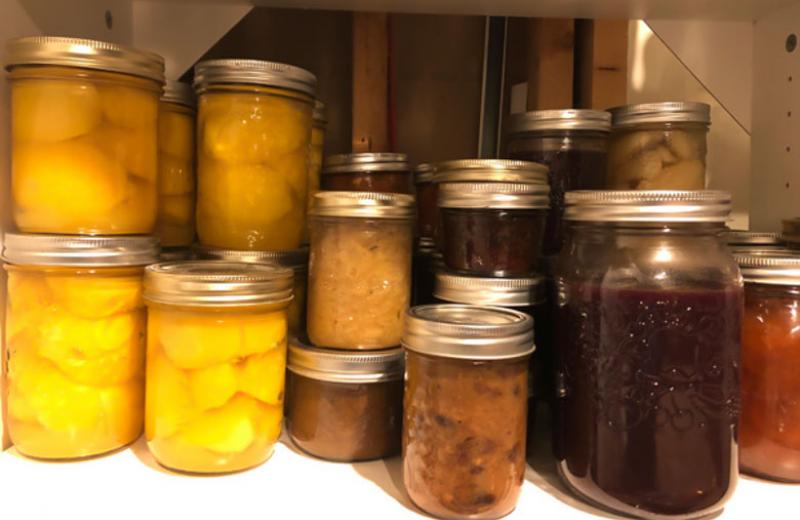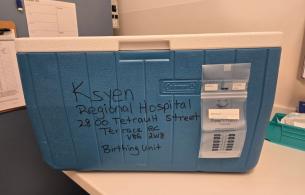When you hear the term “processed foods,” what’s your first thought? Does it bring to mind memories of canning salmon or making jam? What about a childhood comfort food (like that bowl of mac and cheese with hot dog wiener slices) or visiting the carnival? Does it evoke positive or negative feelings? My guess is that “processed foods” is more likely to be seen in a negative way.
What are processed foods?
A simple definition is that processed foods are foods that are purposefully changed before eating. This broadly includes three different types of processing:
- Primary processing, which changes raw materials into food products. For example, when tomatoes are cleaned, sorted, and packaged into cartons.
- Secondary processing, which turns ingredients into food products. For example, when tomatoes become tomato sauce.
- Tertiary processing, which includes commercial production of ready-to-eat and heat-and-serve foods. Often extra sodium, sugar, fat and additives like colour and flavour are added in this step. An example of tertiary processing is when tomatoes become ketchup. The food products that result from tertiary processing are often called highly processed or ultra-processed.
What does the new Canada’s food guide say about processed foods?
Given these different types of food processing, we can see that “processed foods” represent a wide variety of foods. How do we determine if and how we should include processed foods in our diet? The new Canada’s food guide makes two relevant statements:
- “Nutritious foods to consume regularly include fresh, frozen, canned, or dried.” Examples include apple slices, frozen broccoli, canned chickpeas, or dried pasta.
- “Limit highly processed foods.” Note that Health Canada doesn’t say “avoid” or “never.” I think this reflects an effort to balance the benefits that Canadians may experience by including processed foods in their diets with the potential drawbacks. For example, processed foods may be lower in nutrition quality, and there is an association between eating frequent amounts of highly processed foods and risk for disease. That said, processed foods, especially in the broadest sense, may have a place in your diet.

What are some advantages associated with processed foods?
- Convenience: Pre-cut vegetables, a pack of tofu, a ready-to-serve sauce, and ramen noodles help a stir-fry come together quickly for a weeknight dinner.
- Variety: Grocery store shelves and freezers are filled with a tremendous amount and range of tastes and types of foods. Some of this variety is perceived versus real; for example, whether it’s all dressed, buffalo wings, loaded baked potato, or black pepper and lime, they’re all potato chips, which is one type of food.
- Access: Locally grown and seasonal foods can be put away to enjoy later in the year. Our ancestors used dried oolichan, moose jerky, canned peaches, dehydrated cherries, pickles, and many other foods before the time of full-service grocery stores, refrigerators, and freezers.
- Cost: Processed foods may appear to be lower in cost. For example, a frozen lasagna that is on sale for $6.99 is economical, compared to the cost of the individual ingredients, including noodles, vegetables, sauce, cheese, and ground beef.
- Shelf life: Processing can extend the life of a fresh food, through canning and/or the use of salt, sugar, or vinegar.
- Portability: Commercial or home dried meals may make sense on a longer hike or canoe trip.
- Traditions: Celebrate traditions and connections to our environment by making sausage, smoking fish, pasteurizing juice, and canning pie filling, or participating in a multitude of other food traditions.
How do you balance the risks and benefits associated with processed foods?
If you’re considering whether and how to include processed foods in your meal planning, here are a few things to think about:
- Consider your personal definition of healthy eating. How much and how often do processed foods fit within that definition?
- Which processed foods offer you the most value and enjoyment? Make room for these.
- Use food labels to compare processed foods and make informed choices.
- Does your grocery store offer nutrition tours? These are led by a registered dietitian and can be a great support.
- Experiment with traditional recipes to modify the salt, sugar, and fat. Be sure to keep it food safe!
Healthy eating isn’t “one size fits all.” YOU get to decide if and how best to incorporate processed foods into your usual way of eating. For me, that means having a few ready-to-eat meals and pizza in the freezer, a jar or two of ready-made sauce to pull together spaghetti or butter paneer, and a box of KD, for those nights when there is no time or energy to cook. It also means enjoying cultural foods like blood pudding and salt beef when I visit family in Newfoundland. What does healthy eating look like for you?
Editor's Note: We have transitioned our old "Foodie Friday" series to the new "Northern Table" series. We hope you'll be as excited as we are to read this series, which will feature stories on nutrition, recipes, food & lifestyle, and more!














Comments